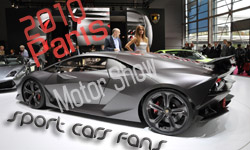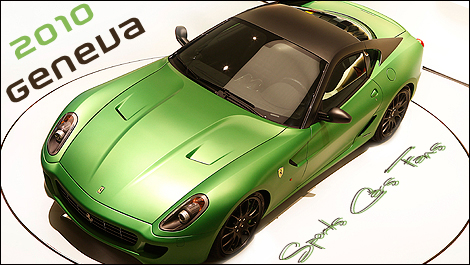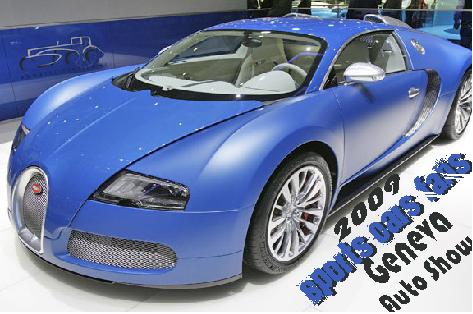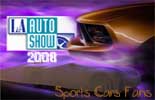Review: 2009 Chevrolet Corvette ZR1

Torque is good. More torque is better. And when you have more than 600 lb-ft of the stuff at your disposal with just a tip of your right toe, life is fantastic. Now, if it would just stop raining, things would be perfect. Such is life with the 2009 Chevrolet Corvette ZR1.
As the old saying goes, "Timing is everything", and as General Motors approached its 100th birthday last September, it introduced the two most powerful production cars it had ever created, the Cadillac CTS-V and the ZR1. Unfortunately, just as GM reached the pinnacle of high performance cars, the world economy imploded. The global financial bubble got pierced from multiple sides and sales of cars at every price and performance level vaporized. Fortunately for us, GM is still hanging in there and Chevrolet let us have a few days of quality time with a ZR1 while the opportunity still exists.
For the hard working people at GM's facilities around the world, it may feel like being in hell with no way out. But there is an escape route for the fortunate few. It's the ZR1. If every GM employee could just go and spend a day in the most powerful of all Corvettes, all their worries might just melt away – if only for a moment. In January of last year, we told you all about the goodies that make a ZR1 special, especially its heart, the LS9. The car once known as the "Blue Devil" begins with the aluminum and magnesium chassis that underpins the Z06 and then follows the Colin Chapman philosophy of "adding lightness" to compensate for the increased mass of the supercharged 6.2-liter V8.
While GM allowed us the use of a Crystal Red Metallic ZR1 for our California photoshoot, we actually spent the week in a striking Atomic Orange Metallic model with an interior finished in the black and grey leather of Chevy's premium equipment package (don't forget to check out the bonus gallery of our Michigan test model). In spite of the outlandish paint color, the ZR1 drew remarkably little attention from on-lookers. Compared to some of the other cars we've driven around town, almost no one gave the ZR1 a second glance. The one exception was the poor valet at a nearby parking garage who recognized what it was as we pulled into our parking space. He seemed heartbroken at not being given the opportunity to drive it.
The problem – if you want to call it that – is that Corvettes in general are pretty common place after more than half-century of production, and unless you look closely, most non-gear-heads wouldn't realize the ZR1 is anything special. At a distance, the carbon fiber roof just looks black and there have been enough variants of the side vents over time that this incarnation isn't entirely noticeable. It's hard to think of any Corvette as a Q-ship, but among the masses, this one almost qualifies. That's not such bad thing, as it lets the driver enjoy the beast in relative privacy.

In an interesting little quirk of timing, fellow Autoblogger, Chris Paukert who lives nearby, procured an Audi R8 last minute and hatched the plan that took us to Hell. For those who don't live around these parts and know of Hell only from some 2,000-year-old book, there is actually a little hamlet northwest of Ann Arbor that goes by that very name. What better place for an orange Vette and a black R8 to come face to face? We'll come back to that meeting in a bit, but first, let's look at life with a ZR1.

Have we mentioned that torque is good? Among more pedestrian Corvettes, the majority are sold with automatic transmissions. Given the aversion most Americans have to manipulating a third pedal, there are surely those who lament the absence of the two pedal option in the ZR1. While we don't have much sympathy around these parts, fortunately, slush-box lovers need not fret. If you've ever had the opportunity to drive an electric car with a single-speed gearbox, you'd be familiar with the phenomenon of a flat torque curve that go from zero rpm and continues to pull and pull into the stratosphere. The LS9 is as close to that sensation as you can get with an internal combustion engine and the ZR1's torque output is so prodigious it can be launched from a dead stop in fourth gear without straining or stalling.
From there, the ZR1 accelerates smoothly well into triple digit speeds without ever touching the gear lever. You still need to use the clutch to get moving, but from there you can just accelerate without really thinking about it. During our time with the car, the Society of Automotive Engineers held their annual gathering in Detroit and we drove to the event a couple of times. The ZR1 is an insanely fast supercar as we experienced during our first drive last summer. However, as we discovered, it's also utterly usable as a daily driver. We encountered plenty of rush hour stop-and-go traffic on those trips into Detroit. Once upon a time, driving a car with performance anywhere close to the ZR1 would have left the driver with a sore leg from pumping that clutch pedal. The LS9 is backed up by a dual plate clutch that provides enough frictional force to withstand the punishment while requiring a much lower effort to disengage. In fact, the ZR1's clutch is markedly lighter and easier to modulate than the unit in the less powerful Z06.

While the ZR1 loves the open road, the beauty is it can be operated anywhere without punishing the driver. The powertrain isn't the only element of the ZR1 that makes it easy to drive. The most significant change to the suspension from lesser models is the adoption of Delphi's magnetic ride damping system. The MR dampers are filled with a hydraulic fluid containing tiny iron particles. By controlling an electric current passing through the fluid, the viscosity – and thus the damping rate – can be continuously varied. The ZR1 is more softly sprung than the Z06, but the MR dampers allow it to corner almost roll-free with a surprisingly comfortable ride. Even going into pot hole-riddled Detroit, the ZR1 didn't bounce around like a C4 Vette would – or a Z06, for that matter.
As wonderful as the mechanical bits of the ZR1 are, if there is one thing people have been less than enthralled with, it is the interior. The C6 Corvette isn't terrible, but compared to Paukert's R8 or virtually any other $100k car, it does feel cheap, even with the premium leather interior. The layout is fine, but much of the switch-gear and controls are carried straight over from lesser Chevrolets, some from a eons ago. Anyone who drove a cruise control-equipped GM car in the 1980s will feel right at home with the turn-signal/cruise stalk in the 2009 'Vette. Similarly, one glance at the steering wheel screams Malibu. These, however, are passable sins. There is one major functional problem with the ZR1 interior that screams out for correction.

Any car that go 200+ mph and pull 1g on the skid-pad should really have an outstanding pair of seats. The CTS-V is available with an optional set of Recaros that steadfastly hold the driver in front of the steering wheel. Even the crude and rude Dodge Viper has a fabulous set of thrones. So why does the ZR1 have to make do with seats that don't even belong in a base Corvette? Please, GM, at least offer the Recaros as an option. There are, however, aspects of being in the ZR1 that far surpass competitors, visibility being chief among those. Aside from the low roof necessitating a forward lean to see some traffic lights, visibility in all other directions is excellent, especially over the shoulders. The R8 definitely loses here.

Aside from the somewhat flimsy seats, manipulating a ZR1 down the freeway, in traffic, on a twisty road or on the track is pure pleasure. The steering feel is excellent, with perfect weighting and feedback that clearly communicates what's happening at the tire/road interface. If a car is going to have over 600 hp, it definitely needs some serious braking power. Again, the ZR1 comes through. Thanks to 15.5-inch diameter Brembo carbon ceramic brakes with six-piston mono-block calipers, the ZR1 dissipates kinetic energy as quickly and consistently as anything on the road today. The remarkably stiff brakes mean there is no slop or sponginess in the pedal and the reaction is beautifully linear.

Before putting the Brembos to work, you need to get the car moving. Sitting still, the LS9 engine emits just enough lumpiness to feel like a heartbeat, letting you know that the ZR1 is alive and well. The tach needle, however, sits completely steady at about 600 rpm, never wavering or surging like a carbureted '60s big block would. Let the clutch pedal out with a light touch on the throttle and the car pulls away as smoothly as a Malibu. Put your right foot down, though, and all hell breaks loose. At lower speeds and light throttle, the exhaust has a pleasant rumble that lets you know this is a classic American V8, but it's not so loud as to alert the authorities or make the commute to work in the morning too annoying.

As the speedometer passes about 40 mph with the gas pedal more than halfway through its travel, the ZR1 suddenly transforms into a reasonable facsimile of a C6R GT1 race car. The thundering bass tones emanating from the exhaust are pure supercar symphony. Rowing through the six-speed gearbox is a pleasure with its reasonably precise gates and short throws. The optional heads-up display allows you to keep your eyes on the road, especially important given the rate at which this machine can consume it. The rush of acceleration available at any speed in almost any gear is absolutely mind-boggling and the supercharged engine never complains or balks at a command. It pushes on through whatever imaginary barrier stops lesser vehicles.
Even when the weather gets less-than-perfect, the ZR1 looks out for the driver. Unlike Dodge's minimalist Viper, which only grudgingly includes ABS, the 'Vette includes full electronic stability control. As a proper car of this caliber should, the system can be reduced in intrusiveness or disabled altogether for those who prefer to have full control. The reality is that even in its default mode, this system has been calibrated as it should for a performance car. The Stabilitrak never feels like an overprotective nanny and a stab of the throttle can easily get the rear end sliding out. When intervention does occur, it nudges the axle back in line rather than jerking it around.
The new ZR1 is truly a daily driver supercar, at least for most days. Even with proper snow tires, it would be extremely unwise to attempt driving a ZR1 in the winter. The ride is comfortable enough, however, that even driving it in Michigan is tolerable, while the grip is sufficient to drive through corners at speeds that would easily get you thrown behind bars. Even the interior – while not up to the standards of Audi or Ferrari – is livable enough as long as the seats get replaced by something better. As for fuel consumption, let's just say that the ZR1 consumes premium refined petroleum – a lot of it. But with an engine like the LS9, does it really matter how much gas gets burned? At a starting price of $102,450 and out-the-door tariff of $115,300, this car truly is a bargain amongst its performance peers, which is an exceedingly small group. Cars like the ZR1, CTS-V and Volt are perfect examples of why we should hope GM emerges from its current financial malaise. GM will need to get more than its product sorted for the company to be pointed on the road out of Armageddon, but when they finally do, it's clear that the automaker already has the perfect chariot for the ride out of hell.
Stop by CorvetteGuys.com and check out their large selection of Corvette T Shirts.
[Source: Autoblog]















